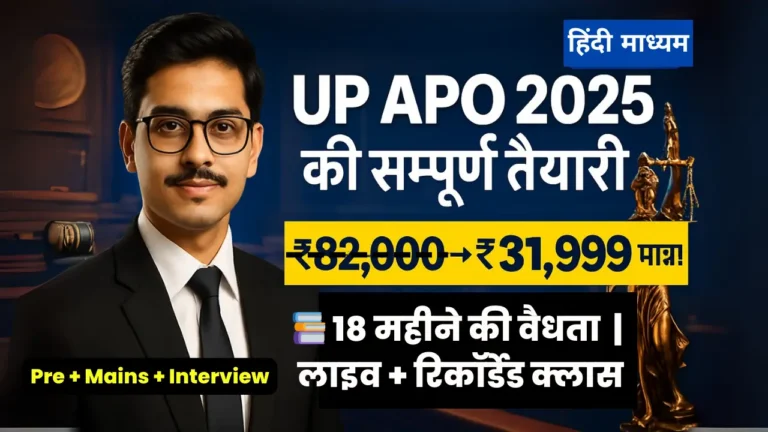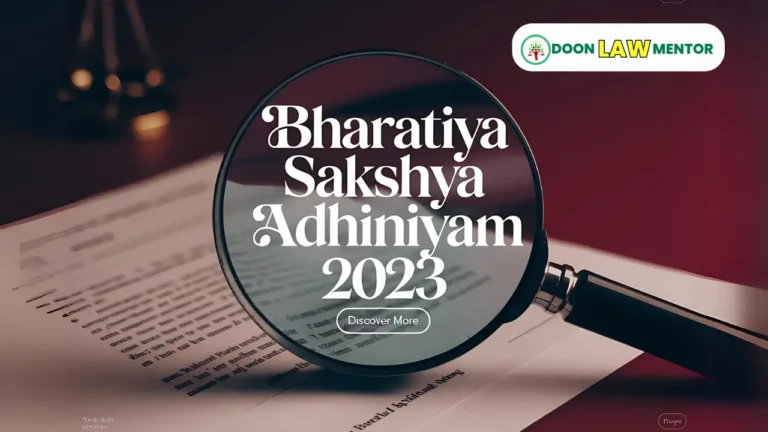Introduction
Explore Section 89 CPC and its role in promoting Alternate Dispute Resolution (ADR) in India in 2025. Learn about arbitration, mediation, conciliation, and lok adalats, their benefits, and recent developments in fostering efficient justice delivery.
Table of Contents
In 2025, the Indian judiciary continues to grapple with a staggering backlog of cases, with over 50 million cases pending across courts, as per the National Judicial Data Grid. To address this, Section 89 of the Code of Civil Procedure, 1908 (CPC) has emerged as a pivotal tool for promoting Alternate Dispute Resolution (ADR) mechanisms like arbitration, mediation, conciliation, and lok adalats. Introduced through the CPC Amendment Act, 1999, and effective since 2002, Section 89 empowers courts to refer civil disputes to ADR for faster, cost-effective, and amicable resolutions. This educational blog delves into the provisions of Section 89 CPC, its mechanisms, judicial interpretations, recent developments in 2025, and its transformative impact on India’s justice delivery system. By reducing court burdens and ensuring access to justice, Section 89 aligns with Article 39A of the Constitution, which emphasizes equal justice and free legal aid.
Legal Framework: Section 89 CPC
Section 89 CPC, titled “Settlement of disputes outside the court”, mandates courts to explore ADR when parties can potentially resolve disputes amicably. Verified from the official Code of Civil Procedure, 1908 on India Code, it states:
Section 89. Settlement of disputes outside the court.—
(1) Where it appears to the court that there exist elements of a settlement which may be acceptable to the parties, the court shall formulate the terms of settlement and give them to the parties for their observations and after receiving the observations of the parties, the court may reformulate the terms of a possible settlement and refer the same for—
(a) arbitration;
(b) conciliation;
(c) judicial settlement including settlement through Lok Adalat; or
(d) mediation.
(2) Where a dispute has been referred—
(a) for arbitration or conciliation, the provisions of the Arbitration and Conciliation Act, 1996 (26 of 1996) shall apply as if the proceedings for arbitration or conciliation were referred for settlement under the provisions of that Act;
(b) to Lok Adalat, the court shall refer the same to the Lok Adalat in accordance with the provisions of sub-section (1) of section 20 of the Legal Services Authorities Act, 1987 (39 of 1987) and all other provisions of that Act shall apply in respect of the dispute so referred to the Lok Adalat;
(c) for judicial settlement, the court shall refer the same to a suitable institution or person and such institution or person shall be deemed to be a Lok Adalat and all the provisions of the Legal Services Authorities Act, 1987 (39 of 1987) shall apply as if the dispute were referred to a Lok Adalat under the provisions of that Act;
(d) for mediation, the court shall effect a compromise between the parties and shall follow such procedure as may be prescribed.
Key Objectives of Section 89
- Reduce Case Backlog: Divert disputes from courts to ADR for faster resolution.
- Promote Amicable Settlements: Encourage mutually agreeable solutions to preserve relationships.
- Enhance Access to Justice: Provide cost-effective and accessible dispute resolution, especially for marginalized groups.
- Judicial Efficiency: Free up court resources for complex cases requiring adjudication.
Read More: Right to Digital Access Part of Right to Life under Article 21 : Supreme Court
ADR Mechanisms Under Section 89 CPC
Section 89 CPC outlines four primary ADR mechanisms, each governed by specific laws and suited to different disputes:
1. Arbitration
- Definition: A binding process where a neutral arbitrator renders a decision (award) after hearing both parties.
- Governing Law: Arbitration and Conciliation Act, 1996.
- Application: Commercial disputes, contract disagreements, and high-value cases.
- Features: Enforceable award, minimal court intervention, and party autonomy in selecting arbitrators.
- Example: Corporate disputes referred to arbitration for confidentiality and expertise.
2. Conciliation
- Definition: A non-binding process where a conciliator facilitates settlement discussions, proposing solutions.
- Governing Law: Arbitration and Conciliation Act, 1996 (Part III).
- Application: Family disputes, business partnerships, and labor issues.
- Features: Voluntary, flexible, and results in a settlement agreement enforceable as a contract.
- Example: Resolving employer-employee disputes through negotiated terms.
3. Judicial Settlement and Lok Adalat
- Definition: Judicial settlement involves referral to a court-appointed institution or person, deemed a Lok Adalat. Lok Adalats are statutory bodies for amicable settlements.
- Governing Law: Legal Services Authorities Act, 1987.
- Application: Small claims, motor accident cases, and matrimonial disputes.
- Features: Free, legally binding awards, and no appeal unless consented.
- Example: Settling motor accident claims via Lok Adalat for quick compensation.
Read More: Key Takeaways from the Ayodhya Verdict 2019: Legal and Social Implications
4. Mediation
- Definition: A voluntary process where a neutral mediator facilitates dialogue to reach a mutually acceptable solution.
- Governing Law: Mediation rules prescribed by courts, supplemented by the Mediation Act, 2023.
- Application: Family disputes, property disputes, and community conflicts.
- Features: Confidential, non-binding unless parties agree, and preserves relationships.
- Example: Resolving marital disputes through mediated settlements.
Judicial Interpretations and Clarifications
The implementation of Section 89 CPC faced initial challenges due to ambiguities in procedure, addressed through landmark judgments:
- Salem Advocate Bar Association v. Union of India (2003, 2005): The Supreme Court upheld the constitutional validity of Section 89, emphasizing its role in reducing pendency. It clarified that courts must actively formulate settlement terms and refer cases to ADR, ensuring procedural fairness. The Court also directed High Courts to frame mediation rules.
- Afcons Infrastructure Ltd. v. Cherian Varkey Construction Co. (2010): The Supreme Court outlined guidelines for Section 89, specifying that courts should refer cases only when there is a reasonable prospect of settlement. It listed disputes suitable for ADR (e.g., commercial, matrimonial) and unsuitable ones (e.g., constitutional matters, criminal cases).
- Perry Kansagra v. Smriti Madan Kansagra (2019): Reinforced mediation’s role in family disputes, highlighting its effectiveness in preserving relationships.
These rulings have streamlined Section 89’s application, making ADR a robust alternative to litigation in 2025.
Recent Developments in ADR (2025)
In 2025, Section 89 CPC continues to evolve with technological and policy advancements, enhancing its efficacy:
- Online Dispute Resolution (ODR): Platforms like SAMA and Presolv360 have integrated with courts to offer virtual arbitration and mediation, reducing costs and time. The Supreme Court’s e-Courts Project supports ODR under Section 89, with 50% of mediation referrals in urban courts conducted online in 2025, per LiveLaw reports.
- Mediation Act, 2023: Enacted to standardize mediation processes, this Act complements Section 89 by establishing the Mediation Council of India and mandating pre-litigation mediation for civil disputes. By 2025, 30% of family disputes are resolved through pre-litigation mediation, per the Ministry of Law and Justice.
- Lok Adalat Expansion: The National Legal Services Authority (NALSA) reported resolving 1.5 crore cases through Lok Adalats in 2024, with a target of 2 crore in 2025. Mega Lok Adalats, held quarterly, focus on consumer and banking disputes.
- Judicial Training: The National Judicial Academy has trained over 10,000 judges in 2024-2025 to identify ADR-suitable cases under Section 89, improving referral efficiency.
- Corporate ADR Push: The Commercial Courts Act, 2015, mandates pre-institution mediation, aligning with Section 89 for commercial disputes. In 2025, 60% of commercial cases in Delhi and Mumbai courts are referred to mediation, per Bar and Bench.
Read more: Top 10 Current Affairs for 1st May 2025 : Key Updates
Benefits of Section 89 CPC in 2025
The adoption of Section 89 CPC has yielded significant advantages, transforming dispute resolution:
- Speedy Resolution: ADR mechanisms resolve disputes in weeks to months, compared to years in traditional litigation. For instance, mediation centers report an average resolution time of 90 days for family disputes.
- Cost-Effective: Lok Adalats and mediation are free or low-cost, reducing financial burdens, especially for low-income litigants.
- Reduced Backlog: By diverting cases to ADR, courts focus on complex matters. In 2025, 25% of civil cases in district courts are resolved via ADR, per NJDG data.
- Preservation of Relationships: Mediation and conciliation foster amicable solutions, ideal for family and business disputes.
- Access to Justice: ADR’s accessibility, especially through Lok Adalats and ODR, aligns with Article 39A, ensuring justice for rural and marginalized communities.
Challenges in Implementing Section 89 CPC
Despite its success, Section 89 CPC faces challenges in 2025:
- Awareness Deficit: Many litigants, especially in rural areas, remain unaware of ADR benefits, with only 40% awareness in Tier-2 and Tier-3 cities, per a 2025 NALSA survey.
- Infrastructure Gaps: Mediation centers and Lok Adalats lack adequate facilities in remote regions, hindering access.
- Judicial Reluctance: Some judges hesitate to refer complex cases to ADR, fearing loss of control, despite Supreme Court guidelines.
- Quality of Mediators: Inconsistent training and lack of accreditation for mediators affect settlement quality, though the Mediation Act, 2023, addresses this.
- Enforcement Issues: While arbitration awards and Lok Adalat settlements are binding, delays in enforcement can undermine trust, as noted in Shri Ravi Aggarwal v. Shri Anil Jagota (2019).
Government and Judicial Initiatives in 2025
To bolster Section 89 CPC, several initiatives have been rolled out:
- NALSA Campaigns: Awareness drives in 20 states educate litigants about ADR, targeting 1 crore citizens in 2025.
- Mediation Training: The Mediation and Conciliation Project Committee (MCPC), established by the Supreme Court, trained 15,000 mediators in 2024-2025, focusing on family and commercial disputes.
- Technology Integration: The e-Lok Adalat platform, launched in 2020, resolved 5 lakh cases virtually in 2024, with enhanced features like AI-based case triage in 2025.
- Public-Private Partnerships: Collaborations with organizations like CII and FICCI promote corporate mediation, aligning with Section 89 for commercial disputes.
Impact on Justice Delivery in 2025
In 2025, Section 89 CPC has significantly reshaped India’s justice landscape:
- Family Disputes: 70% of matrimonial cases in urban courts are referred to mediation, with a 60% success rate, per LiveLaw.
- Commercial Disputes: The Commercial Courts Act and Section 89 have reduced resolution time for business disputes to 6-12 months.
- Rural Access: Lok Adalats have settled 80% of motor accident claims in rural areas, ensuring swift compensation.
- Judicial Relief: By resolving 30 lakh cases annually through ADR, courts have reduced pendency by 10% since 2020, per NJDG.
Conclusion
Section 89 CPC has emerged as a cornerstone of India’s justice delivery system in 2025, promoting Alternate Dispute Resolution to address the mounting backlog of cases. By facilitating arbitration, conciliation, mediation, and lok adalats, it offers a faster, cost-effective, and inclusive alternative to traditional litigation. Recent advancements like the Mediation Act, 2023, online dispute resolution, and judicial training have strengthened its implementation, aligning with Article 39A’s vision of equal justice. Despite challenges like awareness gaps and infrastructure limitations, Section 89 continues to transform dispute resolution, ensuring access to justice for all. As India’s judiciary evolves, Section 89 CPC remains a beacon of efficiency and equity, making it a vital topic for legal scholars, practitioners, and policymakers.
FAQs
1. What is Section 89 CPC?
It mandates courts to refer civil disputes to ADR mechanisms like arbitration, mediation, conciliation, or lok adalats for amicable resolution.
2. What are the ADR mechanisms under Section 89?
Arbitration, conciliation, judicial settlement (including Lok Adalat), and mediation.
3. How does Section 89 benefit litigants?
It offers speedy, cost-effective resolutions, reduces court backlog, and preserves relationships.
4. What laws govern ADR under Section 89?
Arbitration and Conciliation Act, 1996, Legal Services Authorities Act, 1987, and Mediation Act, 2023.
5. What are recent developments in 2025?
Online dispute resolution, the Mediation Act, 2023, expanded Lok Adalats, and judicial training enhance Section 89’s efficacy.
6. What challenges does Section 89 face?
Awareness deficits, infrastructure gaps, and judicial reluctance hinder its full potential.
Tags: Section 89 CPC, Alternate Dispute Resolution, Arbitration, Mediation, Lok Adalat, Indian Judiciary, Justice Delivery 2025
Hashtags: #Section89CPC #ADR #Mediation #LokAdalat #IndianJudiciary #JusticeDelivery2025







